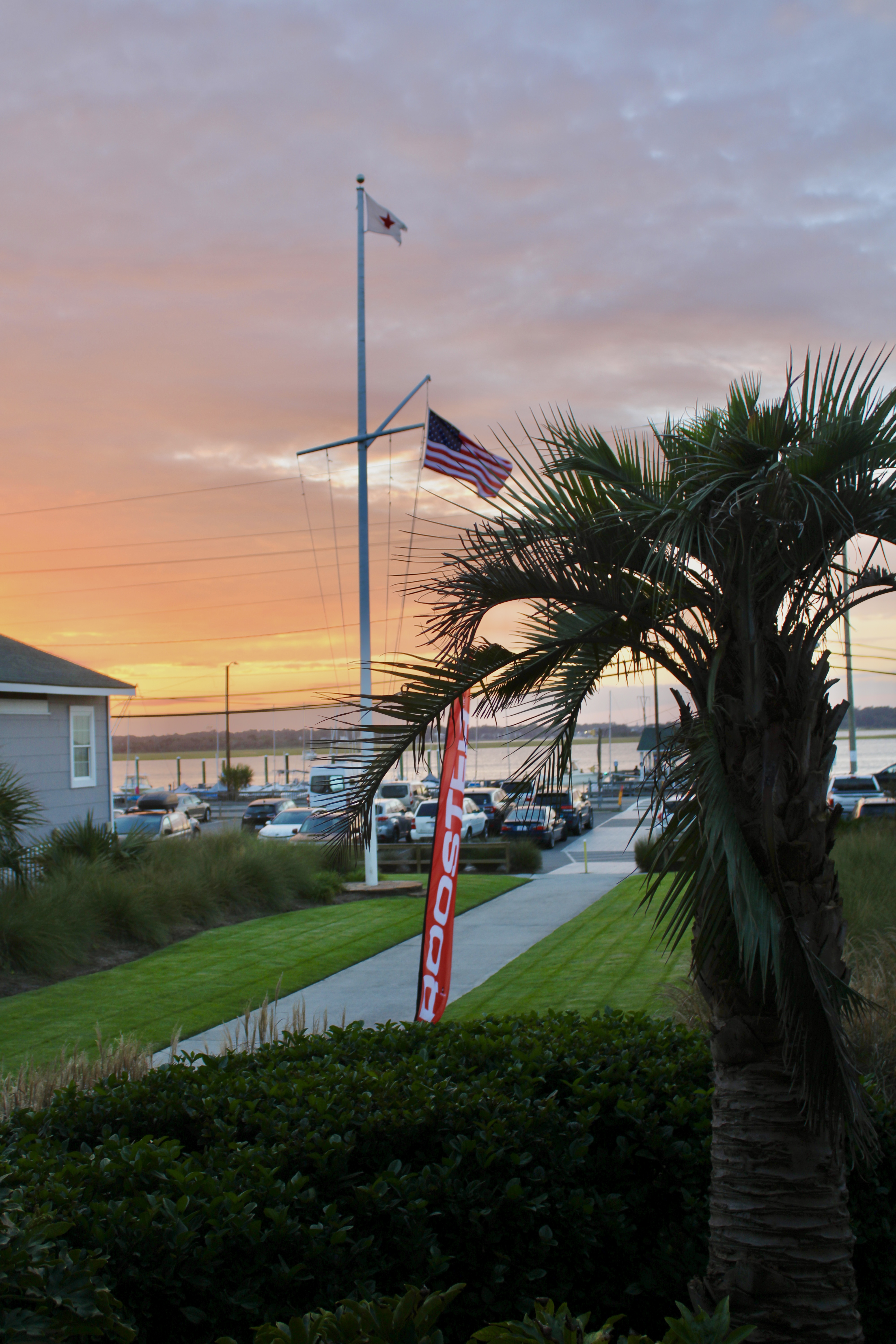Flag Etiquette
We often receive questions about why our club burgee flies higher than the American flag on our flagpole, so we wanted to take a moment to explain why and how this practice aligns with long-standing nautical traditions.

CYC is Treated Like a Ship
A yacht club's clubhouse is traditionally treated like a ship at anchor, not a building on land. That’s why our flagpole isn’t just a land flagpole - it’s a nautical flagpole, designed to mimic the mast of a sailing ship. You’ll notice features like the gaff (a diagonal spar) and yardarm, both representing parts of a traditional sailing vessel’s rig.
The American Flag’s Position
On ships, the position of greatest honor isn’t the highest point of the mast. It’s the aft-most point—the stern. Historically, that’s where a ship would fly its national ensign (the American flag, in our case). On a yacht club flagpole, the gaff represents the stern of the ship. That’s why the American flag is flown from the gaff, not from the peak of the mast. Flying the ensign from the gaff is a maritime tradition that honors the flag by placing it in the position of greatest respect.
Where the Burgee Flies
Our burgee flies from the masthead, above the American flag on the gaff. While it may appear higher, in maritime flag etiquette, it is not considered a place of higher honor. The gaff position still holds precedence over the masthead. This setup often confuses people who are more familiar with land-based flag etiquette, where the highest position is the place of honor. However, in the nautical tradition, height doesn't equal priority—the location on the mast does.
Flagpole Orientation
Our flagpole is oriented to represent a ship at anchor, facing out to sea. This is why the gaff points inland, symbolizing the stern, with the bow facing seaward. Every flag’s position on the mast has meaning, and we follow tradition by honoring those placements.
